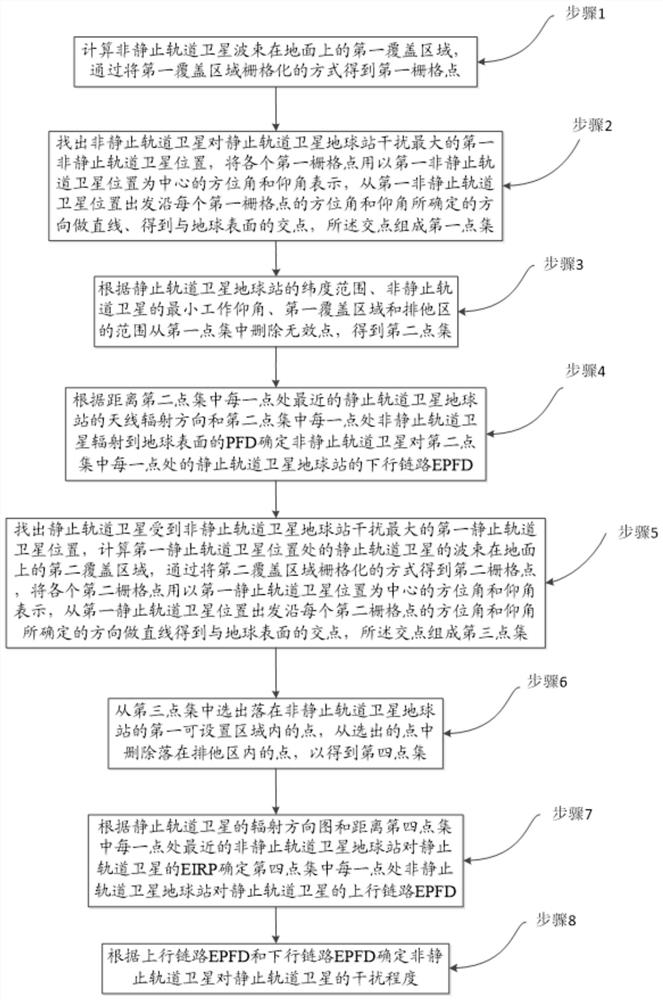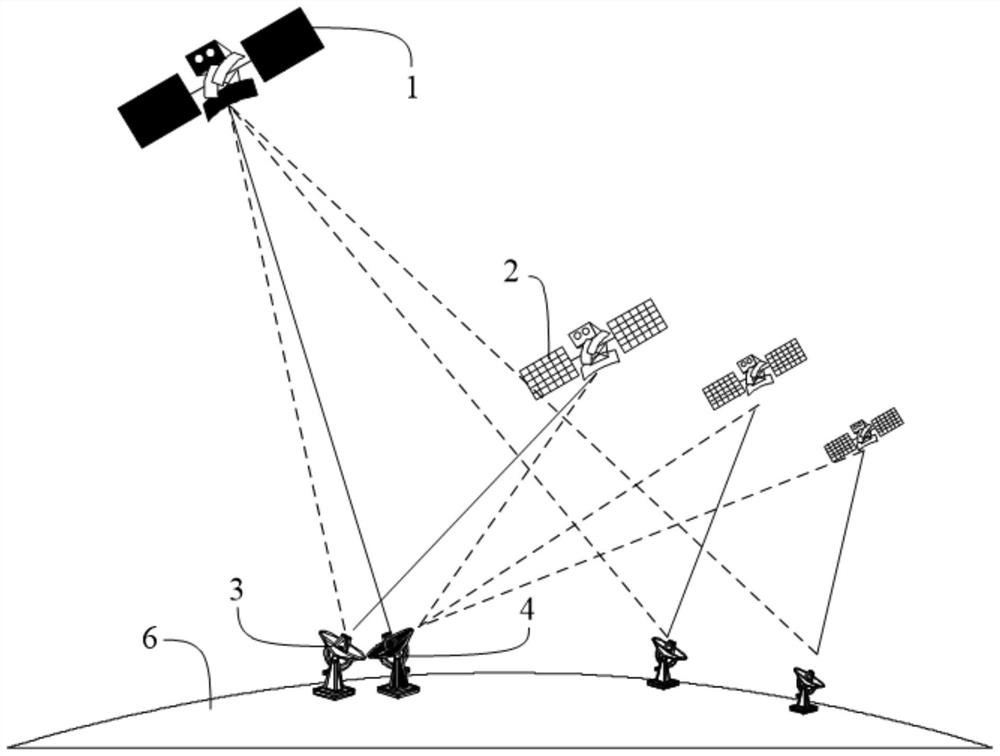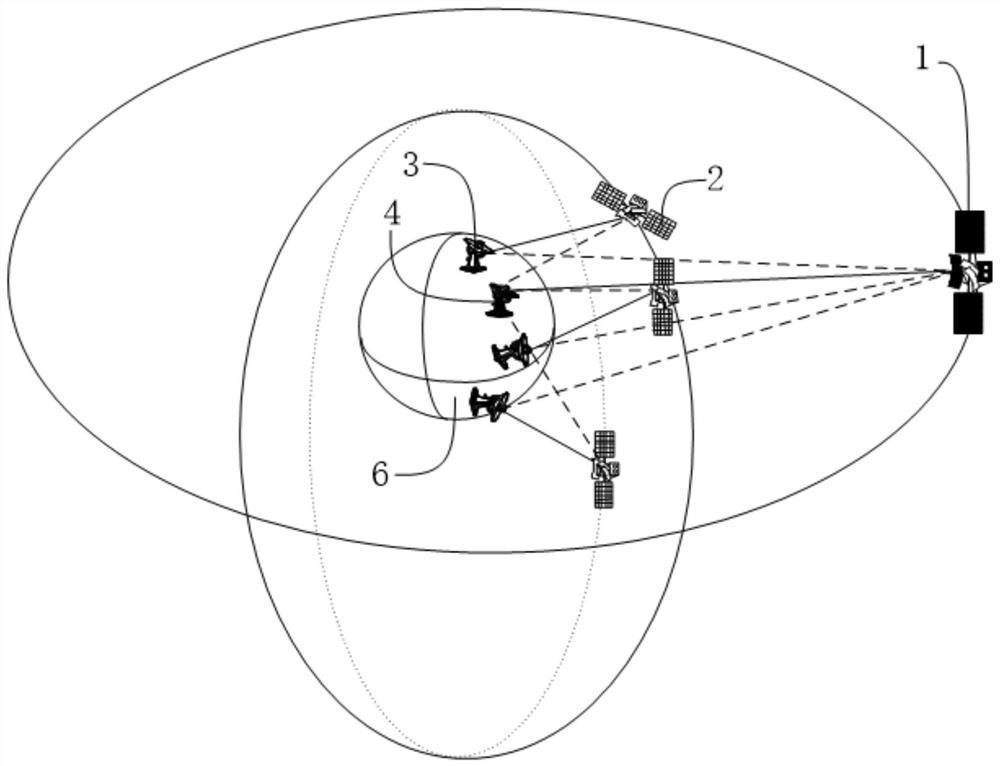A method for analyzing the interference of non-geostationary orbit satellites to geostationary orbit satellites
An orbiting satellite and geostationary orbit technology, applied in the field of satellite communications, can solve the problems of large deviation between the interference degree and the actual value, and the inability to identify the non-stationary orbit satellites of the interference degree, etc., to achieve the effect of accurate analysis and convenient interference avoidance strategy or verification.
- Summary
- Abstract
- Description
- Claims
- Application Information
AI Technical Summary
Problems solved by technology
Method used
Image
Examples
Embodiment Construction
[0040] In the following, the methods for analyzing the interference of several non-geostationary orbit satellites to geostationary orbit satellites provided by the present invention will be explained and described in conjunction with the accompanying drawings.
[0041] Such as figure 2 , 3 As shown, "solid signal line" means "useful signal" and "dotted signal line" means "interference signal". PFD is power flux density, EIRP is equivalent isotropic radiated power, and EPFD is equivalent power flux density. The existing analysis methods for the interference of non-geostationary orbit satellites to geostationary orbit satellites do not consider the various parameters and actual working conditions of satellites and receiving stations, resulting in a large deviation between the calculated interference degree and the actual situation, and it is impossible to find the corresponding interference degree. Issues such as the position of the non-geostationary orbit satellite 2; such a...
PUM
 Login to View More
Login to View More Abstract
Description
Claims
Application Information
 Login to View More
Login to View More - R&D
- Intellectual Property
- Life Sciences
- Materials
- Tech Scout
- Unparalleled Data Quality
- Higher Quality Content
- 60% Fewer Hallucinations
Browse by: Latest US Patents, China's latest patents, Technical Efficacy Thesaurus, Application Domain, Technology Topic, Popular Technical Reports.
© 2025 PatSnap. All rights reserved.Legal|Privacy policy|Modern Slavery Act Transparency Statement|Sitemap|About US| Contact US: help@patsnap.com



